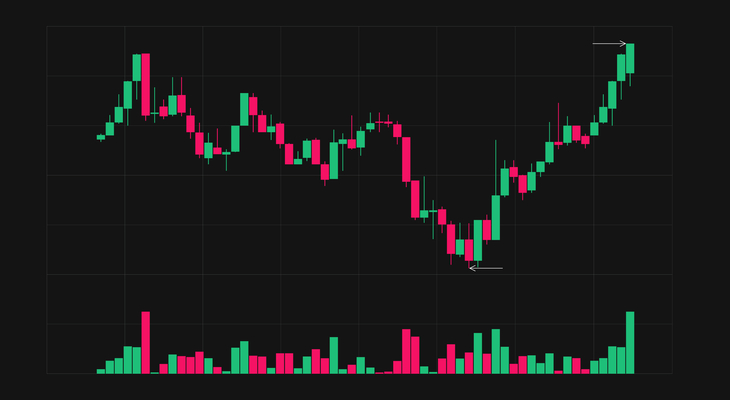Ah, trading books. The very phrase conjures up images of dusty libraries, leather-bound tomes, and the smell of old parchment. But in reality, trading books are anything but antiquated. They are the lifeblood of financial institutions and investors alike, providing crucial information on financial instruments, risks, and strategies.
Understanding trading books is therefore essential for anyone looking to make informed investment decisions, whether you are a seasoned professional or just starting out.
In this article, we will delve into the world of trading books, exploring their functions, risks, and the strategies used to manage them. We will examine the different types of financial instruments included in trading books, the factors that impact profits and losses, and the various metrics used to manage risk.
We will also look at the accounting and tracking function of trading books, regulatory requirements, and the differences between trading and banking books. Finally, we will explore the systems used to value and manage risk in trading books, and discuss how they can be used by both private and retail investors.
So sit back, relax, and prepare to be immersed in the fascinating world of trading books.
Key Takeaways
- Trading books are portfolios of financial instruments used by banks and brokerages to manage investments, monitor performance, and mitigate risks.
- Trading books serve as an accounting ledger by comprehensively tracking the securities held and traded by the organization.
- Risk management systems are employed to identify, measure, and manage risk within the trading book, while trading tools and systems are employed to monitor and execute trades.
- Trading books are utilized for managing risk and making informed investment decisions and are used by financial institutions and retail traders.
Types of Financial Instruments
Various types of financial instruments, including equities, debt, commodities, foreign exchange, derivatives, and other financial contracts, are incorporated in trading books to manage investments, monitor performance, and mitigate risks in financial institutions and retail trading.
These instruments are used to diversify portfolios, as different assets react differently to market conditions. Diversification offers benefits such as reducing risk and increasing returns, as it spreads investments across different assets, which lowers the risk of losing money in any single asset.
However, the impact of market volatility on different financial instruments varies. For example, equities are more volatile than bonds, while commodities are highly sensitive to geopolitical events. Foreign exchange is influenced by economic and political factors, while derivatives are used to hedge against risk.
Understanding the characteristics of each financial instrument and their behavior in different market conditions is crucial for effective risk management in trading books.
Profit and Loss Factors
The financial performance of a trading book is significantly influenced by the fluctuation of security prices, which can result in substantial gains or losses. Trading books are portfolios of financial instruments that are bought and sold with the intent of generating profits.
The value of these securities can be affected by a variety of factors, including market trends, economic indicators, geopolitical events, and changes in interest rates. As a result, traders must carefully analyze market trends and make informed decisions to maximize profits and minimize losses.
To achieve success in trading, traders must pay close attention to the factors affecting profit and loss in trading books. These include the volatility of the securities being traded, the liquidity of the market, and the overall economic climate.
Additionally, traders must be able to quickly adapt to changing market conditions and adjust their strategies accordingly. Successful traders use a combination of technical analysis, fundamental analysis, and market intuition to identify opportunities and make profitable trades.
By carefully analyzing market trends and staying ahead of the curve, traders can achieve success in the dynamic world of trading.
Risk Management Metrics
One essential aspect of managing a trading book is utilizing effective risk management metrics. Quantifying risk and implementing risk mitigation techniques are crucial in ensuring that the trading book is profitable and sustainable. Various risk management metrics are used to assess and manage risk, including value-at-risk (VaR), stress testing, and scenario analysis.
The table below summarizes the features of each risk management metric:
| Risk Management Metric | Description | Advantages |
|---|---|---|
| Value-at-risk (VaR) | Estimates potential losses in a portfolio over a given time period and confidence level | Easy to calculate, widely used, provides a single number for risk assessment |
| Stress testing | Simulates the impact of extreme market events on a portfolio | Identifies potential vulnerabilities, useful for assessing tail risks |
| Scenario analysis | Examines the impact of multiple market scenarios on a portfolio | Provides a comprehensive view of potential outcomes, useful for stress testing and scenario planning |
By utilizing these risk management metrics, trading book managers can identify potential risks and develop strategies to mitigate them. The use of these metrics allows for a more comprehensive and informed approach to managing a trading book, ultimately leading to better performance and risk management.
Accounting and Tracking Function
To ensure accuracy and transparency in managing investments and monitoring performance, financial institutions use accounting and tracking functions within their trading books. These functions enable institutions to comprehensively track all securities held and traded, providing a wealth of information for reference and analysis.
One of the primary tools employed in this process is the ledger, which documents all transactions of clients who have authorized the institution to buy and sell securities on their behalf. Additionally, institutions must have policies and processes in place to quantify and monitor all significant sources and effects of market risks.
Other aspects of accounting and tracking functions in trading books include methods of valuation, risk management systems, trading tools and systems, risk control, trade management, and approval and management of the trading book structure.
Trading books are subject to profits and losses as prices of incorporated securities change, and the ledger management and transaction tracking functions help ensure that all transactions are accurately recorded. These functions are essential in helping institutions manage risks and make informed investment decisions.
Trading Intent Positions
Positions held with the intent of reselling in the short-term are required to adhere to specific requirements to be managed within a trading book. To ensure that these positions are well-managed, financial institutions and stockbrokers must have clearly documented trading strategies, approved by senior management. These strategies must outline how the institution plans to manage the risks associated with these positions, including market, credit, liquidity, and operational risks.
In contrast, long-term investments are held in the banking book. This is because they are intended to be held until maturity and comprise customer loans to and deposits from retail and corporate customers.
Day trading strategies, on the other hand, are often employed by investors who hope to make a quick profit by buying and selling securities within a single trading day. These strategies can be risky, and institutions must ensure that they have adequate risk management systems in place to minimize any potential losses.
Regulatory Requirements
Financial institutions and stockbrokers must comply with specific regulatory requirements to manage trading books effectively. Compliance challenges arise due to the need to adhere to the various regulatory frameworks that govern the management of trading books. These requirements include having a comprehensive ledger to document transactions, implementing policies and processes to monitor and quantify all significant sources and effects of market risks, and having a clearly documented trading strategy approved by senior management.
Institutions must also have risk management systems in place to identify, measure, and manage risks within the trading book while adhering to all relevant regulations.
Regulatory frameworks are put in place to ensure that the management of trading books is done in a responsible and transparent manner. Institutions must adhere to these frameworks to mitigate risks and ensure that they operate within the bounds of the law.
The challenges of compliance are significant, and institutions must invest in the necessary systems and controls to ensure that they meet regulatory requirements. Failure to comply can lead to significant penalties and reputational damage.
Therefore, institutions must be vigilant in their efforts to comply with the regulatory frameworks that govern the management of trading books.
Differences from Banking Books
The management of trading books differs significantly from that of banking books, which are intended to be held until maturity and primarily comprise customer loans and deposits.
While banking books focus on long-term investments and cash flow, trading books are designed for active trading and short-term investments.
This difference in focus has a significant impact on the risk management strategies employed by financial institutions.
Trading books are subject to more volatility and market fluctuations, and as a result, they require more active risk management.
This means that financial institutions must have more comprehensive risk management systems in place to monitor and mitigate risks associated with trading books.
Additionally, the importance of trading books for financial institutions and traders in today’s market cannot be overstated.
The ability to effectively manage trading books can provide a significant competitive advantage, as it allows institutions to make informed investment decisions and manage risks effectively.
Valuation and Risk Management Systems
Valuation and risk management systems are crucial components of effectively managing a trading book, as they enable financial institutions to quantify and monitor market risks and make informed investment decisions. Quantitative analysis is a key part of the valuation process, allowing institutions to determine the fair value of securities and financial instruments in their portfolio. This involves using financial models and algorithms to analyze market data, including historical prices, trading volumes, and other relevant information.
By conducting this analysis, institutions can better understand the potential risks and rewards associated with their portfolio, and make adjustments as needed to maximize returns and minimize losses.
Market volatility is a major consideration in the risk management process for trading books. Financial institutions must have systems in place to monitor market conditions and identify potential risks, such as sudden shifts in prices or unexpected changes in market conditions. This involves using advanced analytics and risk management tools to analyze market data and develop strategies for mitigating risk.
By effectively managing market risks, financial institutions can ensure that their trading books remain profitable over the long term, while also minimizing the potential for losses. Overall, effective valuation and risk management systems are essential for managing a trading book, allowing financial institutions to make informed investment decisions and maximize returns while minimizing risk.
Private and Retail Use
With a plethora of trading books available in the market, private investors can benefit from the wealth of information provided to track and document their investment activities. Trading books offer a comprehensive overview of an individual’s investment history, including capital requirements, securities traded, and trading strategies used.
Moreover, trading books serve as a valuable resource for small investors to learn about the fundamentals of investing, including risk management and portfolio diversification.
The application of trading books in e-commerce has also opened up new opportunities for retail traders to access the global financial markets. Retail traders can now access trading books online, providing them with real-time market data, trading tools, and strategies to execute trades.
The benefits of trading books for small investors include increased transparency, access to valuable information, and the ability to track and monitor their investment portfolios. Trading books also provide a way for small investors to learn from experienced traders and authors, gaining insights into successful trading strategies and risk management techniques.
Frequently Asked Questions
What are some common trading strategies used by financial institutions and retail traders?
Algorithm did not provide an output as the Current Question requires more specific keywords related to trading strategies used by financial institutions and retail traders. Nonetheless, trading strategies can vary based on the type of financial instrument being traded, the market conditions, and the risk tolerance of the trader.
Some common strategies employed by financial institutions and retail traders include:
- Trend following: involves identifying and following the direction of the market trend.
- Mean reversion: a strategy that involves trading against the current trend with the expectation that the price will revert to its mean.
- Breakout trading: involves identifying key levels of support and resistance and trading when the price breaks out of these levels.
- Contrarian trading: involves taking positions opposite to the prevailing market sentiment.
- Scalping: a short-term strategy that involves making multiple trades to profit from small price movements.
- Hedging: involves using derivatives to offset potential losses in a portfolio.
How does the use of trading books differ between smaller retail traders and larger financial institutions?
The difference in the use of trading books between smaller retail traders and larger financial institutions lies in the limitations of retail traders and the advantages of institutions. Retail traders have limited financial resources and may lack the expertise to manage complex portfolios, unlike financial institutions that possess substantial capital and employ experienced professionals to manage their trading books.
Institutions have access to advanced trading tools and systems, which enable them to analyze market trends and execute trades quickly and efficiently. Retail traders are often restricted to limited trading opportunities, and their trading books may not be as comprehensive as those of institutions.
In contrast, institutions are better equipped to monitor and manage risks, adhere to regulatory requirements, and make informed investment decisions, all of which contribute to their success in the market.
Can you provide examples of specific risk management systems and tools used by institutions to monitor and manage risk within trading books?
Risk management tools and portfolio optimization strategies are essential for institutions to monitor and manage risk within their trading books. Institutions often employ proprietary methods for risk management, such as value-at-risk (VaR) models and stress-testing scenarios.
VaR models measure the potential loss in a portfolio over a given time period, based on statistical analysis of historical market data. Stress-testing scenarios examine the impact of extreme market events on a portfolio’s performance.
Institutions also use portfolio optimization strategies, such as diversification and hedging, to mitigate risk. Diversification involves spreading investments across different asset classes, while hedging involves taking offsetting positions to reduce risk.
In addition, institutions use real-time monitoring systems to track market movements and identify potential risks. These risk management tools and strategies enable institutions to make informed investment decisions and manage risk in their trading books effectively.
Are there any notable historical events or market fluctuations that have had a significant impact on trading books and their use in the finance industry?
The financial industry has weathered numerous market crashes and historical events that have had a significant impact on trading books.
For instance, the 2008 global financial crisis led to more rigorous regulatory frameworks for trading book management, with firms being required to use robust risk management systems and tools. In the wake of the crisis, institutions were forced to reassess their risk appetite and trading strategies.
Historical case studies, such as the collapse of Long-Term Capital Management in 1998, have also demonstrated the importance of managing risks in trading books.
These events have led to an increased focus on transparency, accountability, and risk management in the finance industry.
Despite the challenges, the use of trading books continues to be an integral part of managing investments and mitigating risks in the financial sector.
How do trading books factor into the overall financial performance and profitability of a financial institution or retail trader?
Trading books play a crucial role in the overall financial performance and profitability of financial institutions and retail traders. Portfolio management is a significant factor in trading books, as they are used to manage investments and monitor performance.
Profit and loss analysis is also a crucial aspect, as trading books are subject to profits and losses due to price fluctuations of the securities included in the portfolio. Risk management systems and controls are put in place to identify and mitigate risks associated with trading books.
Additionally, trading books serve as an accounting ledger that comprehensively tracks the securities held and traded by the organization, providing a wealth of information that is essential for making informed investment decisions.
Overall, trading books are an integral part of the finance industry, and their effective use can contribute to the financial success of an institution or individual trader.
Conclusion
In conclusion, understanding trading books is crucial for investors and financial institutions alike. These portfolios of financial instruments serve as a tool to monitor performance, manage investments, and mitigate risks. They contain valuable information, including capital requirements, securities traded, and risk management metrics.
Trading books differ from banking books, and their regulatory requirements must be met to ensure compliance. In essence, trading books are a necessary evil. They can be both profitable and perilous, depending on the strategies used and the market conditions.
However, with the right valuation and risk management systems in place, trading books can be a valuable asset to any investor’s portfolio. So, if you’re looking to make informed investment decisions, take the time to understand trading books – you won’t regret it.











